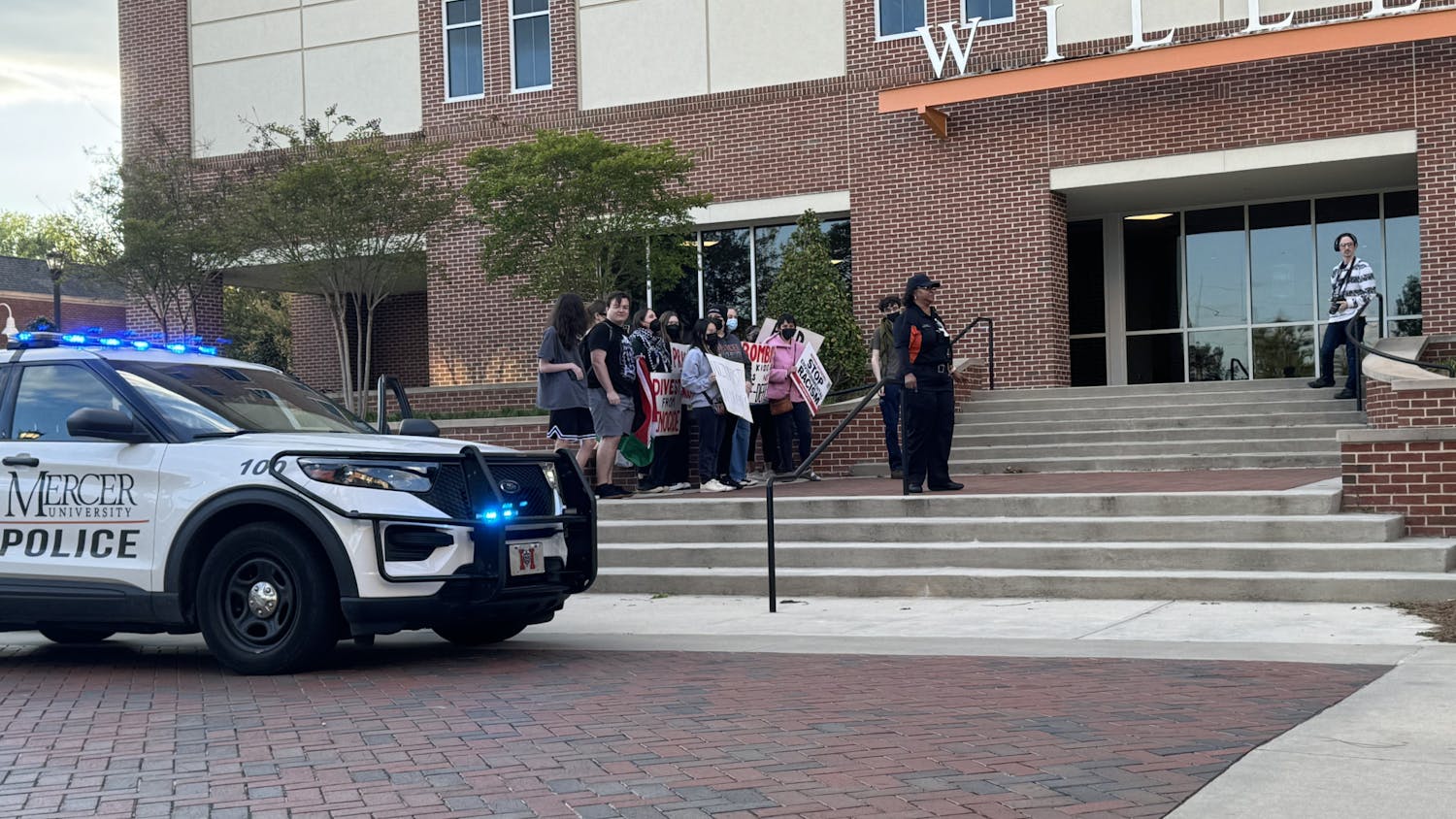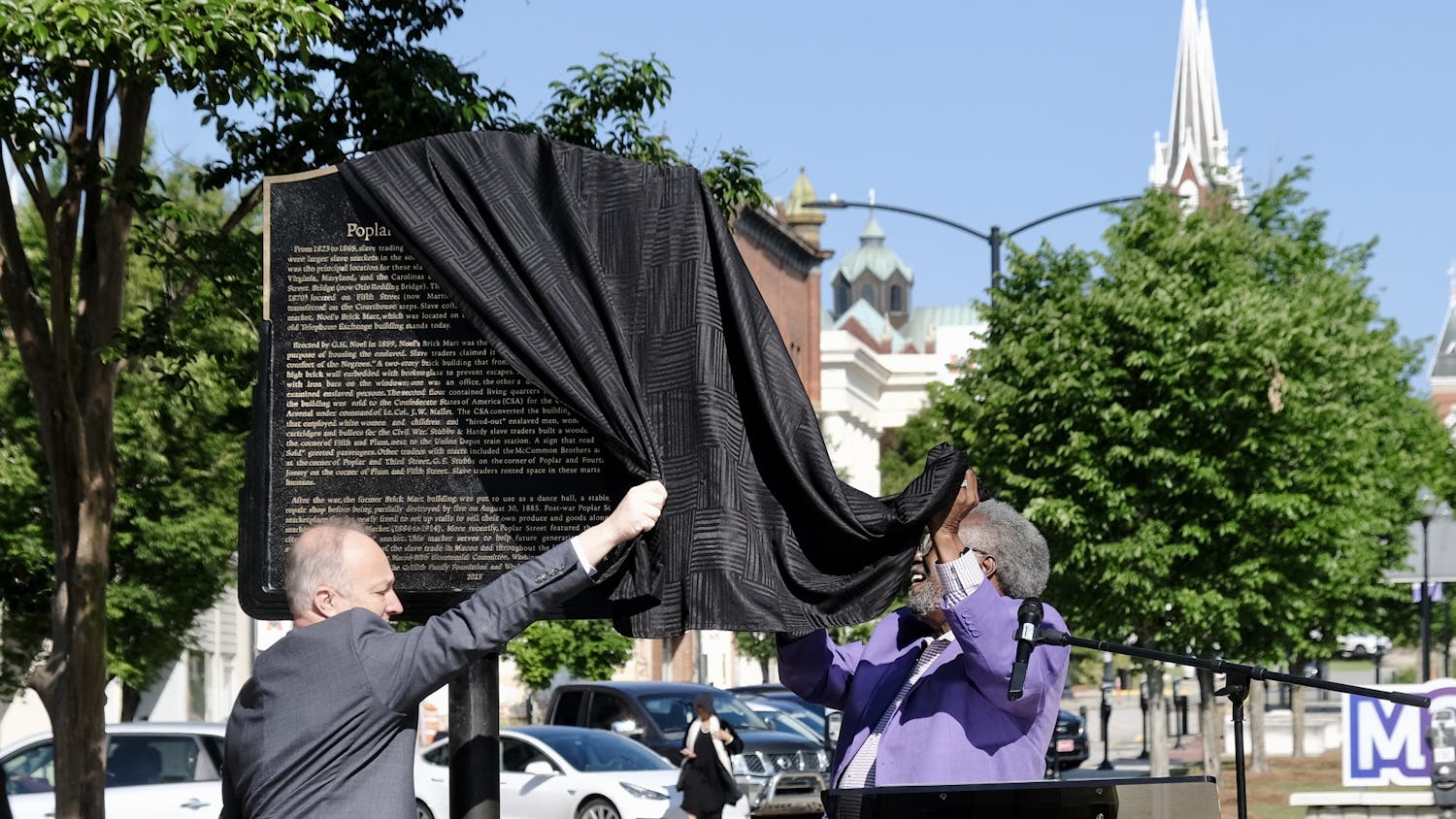On Sept. 12, Mercer University’s Tift College of Education provided a screening of the documentary “Race to Nowhere,” which Associate Professor of Education and Chair of Teacher Education Kelly Reffitt introduced as a film that “challenges our current thinking about how we educate our children.”
The film showing was part of the first fall forum presented by Tift, showcasing a sometimes underestimated part of learning: student stress.
Following the film presentation was a panel discussion moderated by Dr. Joseph Jones, assistant professor at Mercer. The panel included Dr. Quinton Green, principal at Ingram-Pye Elementary School; Dr. Stephanie McClure, associate professor of sociology at Georgia College; Amanda Miliner, 2015 Georgia Teacher of the Year; Ms. Tammy Strickland, veteran math teacher from Houston County; and Dr. Sharon Augustine, assistant professor of education and director of doctoral studies in curriculum and education at Mercer.
The first question from the audience concerned why math is the cornerstone stress indicator. Miliner said that math teachers generally teach from the standards as a checklist instead of teaching problem-solving skills. She said, “We should teach them how to think, not how to do things,” adding that differentiated instruction in the classroom as of late is helping to solve that problem.
When asked of their overall impressions of the film, the panelists’ aggregate response was that they agreed with much, if not most, of it.
Another audience member asked what role class structure plays in teacher and parent choices, and McClure said that social influence takes control even when people cognitively know better. Augustine said, “People tend to pretend that class distinction and its effects don’t exist,” and that people want to maintain or ascend a comfortable middle class life, making whatever choices they feel will lead them there.
Between questions, Miliner suggested that the medical field needs to take more of a role in child development as well. She said that, while pediatricians emphasize physical development, perhaps they need to inform parents on what children are, on average, able to accomplish academically at a given age.
One member of the audience, a parent, said that she puts her children in many activities in order to keep them off the street and asked how, if student workloads are lessened, they will grow up to be prepared for the real world.
McClure said that the film only reflects middle and upper-middle class parents and children and that their situations are not exactly applicable on a broader scale.
She added, however, that sometimes play time can be work time and that adding too many procedural assignments and allotting less time for play is not beneficial: “We’ve unnecessarily dichotomized those two things, work and play.”
Another student expressed disapproval with much of the movie, specifying that it made it seem as though teachers were responsible for too much in the students’ lives. She added that “teachers’ hands are tied” in most cases, when districts and school boards dictate that certain concepts should be taught.
Strickland responded, “Yes, we’re handcuffed, but … I have to know everyday that I have taught my best.” She also advised pre-service teachers just to serve their purpose to the best of their ability.
The final question of the night came from an audience member who wanted to know what works to help schools if money does not. McClure quickly said, “Smaller classes and smaller schools.”
To close the night, Jones returned to the microphone and said, “We love the students and what we do. Embrace them and their journey.”
Tift College holds documentary viewing





